新的Angular引擎Ivy[译]
Angular Ivy - 第三代Angular渲染器的完整指南。
更小的捆绑包,更快的编译,更方便的调试,还有模块和组件的动态加载以及高阶组件等等高级概念。
一年多以前,Angular核心团队在ng-conf上宣布他们正在研究Angular Ivy,尽管它还没有100%准备好投入生产,但我觉得这是一个深入了解 Angular的新版本渲染器的好时机。
经过漫长的等待,Angular版本8发布!
这是一个主要版本,带来了许多很酷很重要的功能,例如差异加载,新构建器API,Web-Workers支持等等。
但最重要的是,Ivy终于来了!
正文
为什么关注Ivy
首先-移动设备!
这也许听起来疯狂,但确实我们有63%的在线流量来自智能手机和平板电脑。到今年年底,80%的互联网使用预计将来自移动设备。
我们面临的最大挑战之一是前端开发人员是加载网站尽可能的快。不幸的是移动设备经常因为坏或缓慢的互联网连接,使这种挑战变得更加困难。
另一方面,我们可以使用许多解决方案加载应用程序更快.例如从最近的云的CDN节点请求文件,PWA缓存的资产文件等。但是我们能为开发者做的是最大程度减少包的大小.
减少捆绑包大小
所以…捆绑大小。让我们看看它的实际效果。我们以eliassy.dev 作为案例研究。这是一个使用Angular构建的简单网站,它看起来很简单,但它使用了许多核心功能。它还使用Angular PWA包来支持离线和Angular Material与Animation模块。
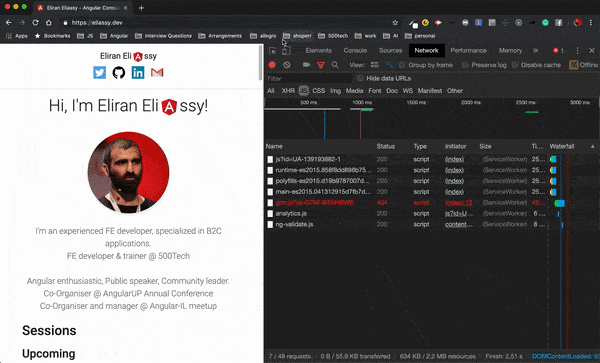
在Ivy之前,我的主要重量超过500 kb。

现在让我们选择加入Ivy,编辑tsconfig.app.json并添加一部分angularComplierOption并设置enableIvy为true。对于新的Angular CLI项目,您可以--enableIvy在运行ng new脚本时使用该标志。
1 | { |
现在让我们再次使用构建应用程序 ng build —prod:

我们可以看到我们的捆绑包收缩了77KB,这是捆绑包大小的15%,这意味着我们网站的加载时间将快15%。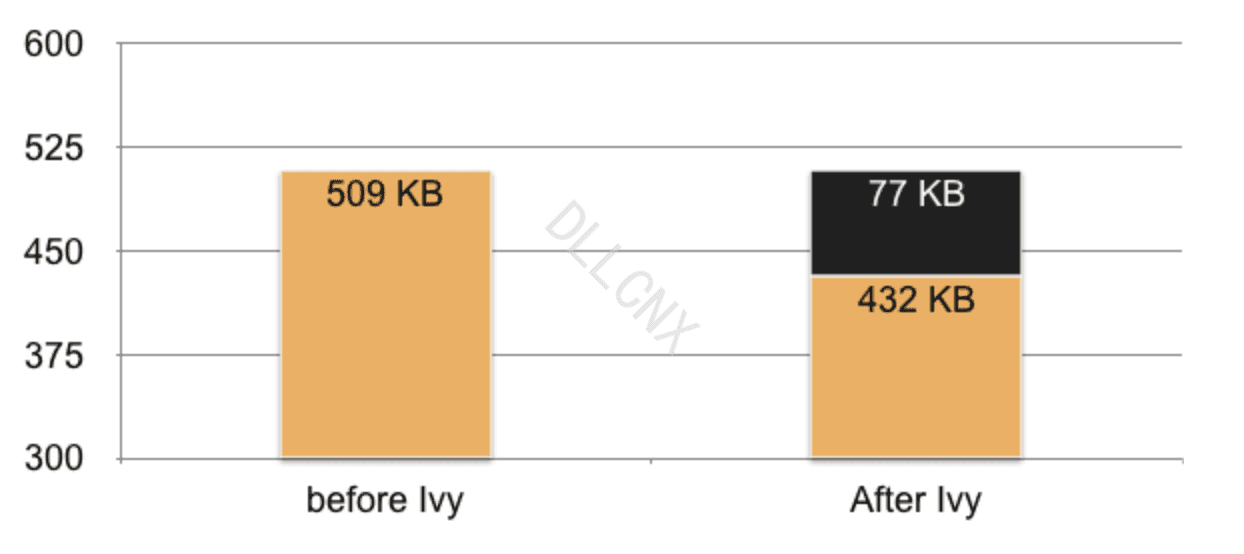
你们中的一些人可能会因为我们只削减了15%的捆绑大小而感到失望。原因是即使这是一个小项目,它仍然依赖于许多核心功能,而目前,Ivy主要是削减生成的代码,而不是框架本身。
Stephen Fluin刚刚发布核心团队仍在努力使捆绑包的尺寸更小:
“我们现在正在努力减少框架大小,以便在将Ivy作为默认设置之前,我们几乎在每种情况下都减少了实际应用程序的包大小。由于我们提供了新的引导方式,因此我们还可以获得额外的好处。
他是如何工作的
那么,它的背后是什么?它是如何工作的?
要理解我们需要深入了解编译器的内部。让我们创建这个简单的代码:
1 | import { Component } from '@angular/core'; |
现在,让我们运行ngc命令来生成转换后的代码:
- 对于视图引擎渲染器:
node_modules/.bin/ngc
1 | /** |
- For Ivy:
node_modules/.bin/ngc -p tsconfig.app.json
1 | import { |
它发生了很大的变化,但是一些主要的差异在这里很重要:
- 我们不再有factory文件,现在所有装饰器都转换为静态函数。在我们的例子中,
@Component转换ngComponentDef。 - 指令集发生了变化,因此tree shaking ,将小得多。
不仅仅是更小的捆绑包
如果我们看一下ngIf转换代码的部分:
1 | i0.ɵdid(4, 16384, null, 0, i3.NgIf, [i0.ViewContainerRef, i0.TemplateRef], { ngIf: [0, "ngIf"] }, null)], |
出于某种原因,我的应用程序组件与ViewContainerRef和TemplateRef相关联,如果你想知道它们两个的来源,他们实际上是依赖NgIf指令实现的。
在Ivy中将变得更加简单,现在每个组件都引用了子组件或指令,但公共的API却更加清晰。意思就是当我们改变某些东西时,比如:NgIf的实现,我们不需要重新编译所有东西,我们可以重新编译NgIf而不是AppComponent类。
通过这种方式,我们不仅实现了更小的捆绑,而且实现了更快的编译,以及将库推送到NPM的更简单的方法。
使用Ivy进行调试
Ivy还提供了更简单的调试API。
让我们用(input)事件创建一个输入,并将它绑定到一个名为的不存在的函数search:
1 | import { Component } from '@angular/core'; |
在Ivy之前,当我尝试在输入中输入内容时,我们会在控制台中看到它:
使用Ivy,我们的控制台将更加丰富地了解我们从哪里获得错误:
所以我们通过Ivy获得了另一个目的,更好的模板调试!
动态加载
我们有一个简单的应用程序,有2个模块,应用程序模块和功能模块。功能模块将与路由器一起延迟加载,并将显示功能组件。所以,当我点击click me按钮时,我在网络中获得了功能模块:
Angular 8带来了一个用于加载模块的新API,它现在支持ES6动态导入。
之前:
1 | const routes: Routes = [ |
之后:
1 | const routes: Routes = [ |
有了这个,我们为什么不直接在组件上尝试相同的导入?
结果如下:
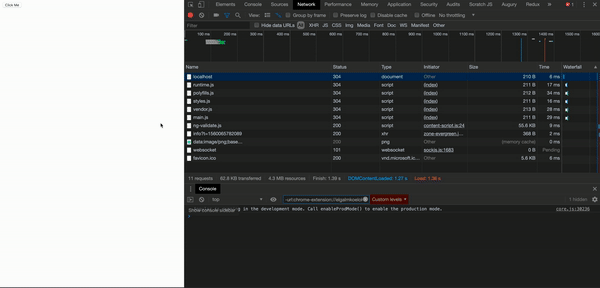
它实际上是工作了!! 但是等等……发生了一件奇怪的事。我们已经加载了一个组件,但没有在模块中声明它。
那么,我们还应该在模块中声明组件吗?或者,模块现在可选吗?我们很快就会回答这个问题,但首先,让我们尝试将此组件添加到视图中。
为此,我们使用ɵrenderComponent函数:
1 | export class AppComponent { |
我在这里得到一个异常,这是对的,因为我们试图将组件附加到视图,但没有告诉谁是host元素对吗?
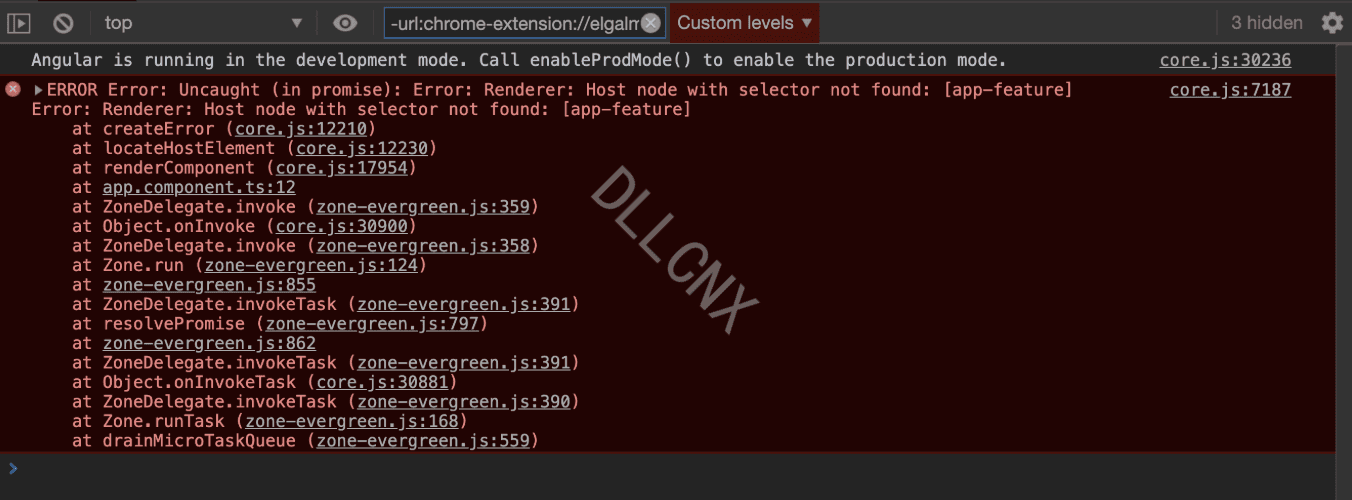
这里我们有两个选项,第一个 - 将FeatureComponent选择器添加到DOM,Angular将知道使用渲染选择器占位符的组件:
1 | <button (click)="loadFeature()">Click Me</button> |
或者renderComponent有另一个签名获取配置,我们可以设置host。我们甚至可以添加一个不存在的host,Ivy会将其附加到它:
1 | loadFeature() { |
模块是否仍然必要?
正如我们刚才所见,我们不需要在模块上声明一个组件。现在我们所有人都想知道我们是否真的需要模块?
为了回答这个问题,让我们创建另一个用例 - 现在FeatureComponent将注入一个将在AppModule中声明和提供的配置:
1 | export const APP_NAME: InjectionToken<string> = |
FeatureComponent:
1 | import { Component, OnInit, Inject } from '@angular/core'; |
现在 - 如果我们再次尝试加载组件,我们会得到一个异常,因为我们的组件没有注入器:
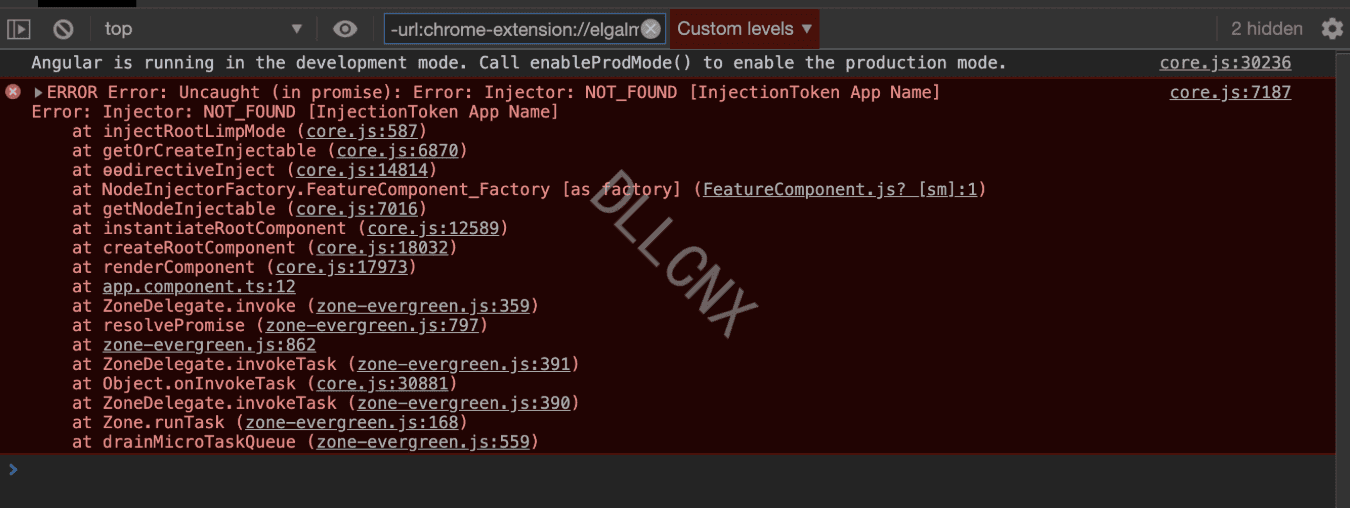
在模块上没有声明组件也存在问题,我们实际上没有使用注射器。尽管如此,renderComponent配置还允许我们声明一个Injector:
1 | export class AppComponent { |
结果如下:

好极了!有用!
高阶元件(HOC)
正如我们刚刚看到的那样 - Angular现在更加动态,它还允许我们实现像HOC这样的高级概念。
什么是HOC?
HOC是一个函数,它获取一个组件并返回一个组件,但也影响它们之间的组件。
让我们通过HOC,将它作为装饰器添加到我们创建的基本组件 AppComponent:
1 | import { Component, ɵrenderComponent, Injector } from '@angular/core'; |
现在让我们利用HOC和动态导入的概念来创建一个惰性组件:
1 | import { Component, ɵrenderComponent, Injector, ɵɵdirectiveInject, INJECTOR } from '@angular/core'; |
谈论几个有趣的点:
如何在没有Angular DI的情况下安装injector?还记得
ngc命令吗?我用它来检查Angular如何在转换后的文件中翻译构造函数注入并找到directiveInject函数:1
const injector = ɵɵdirectiveInject(INJECTOR);
我已经使用HOC函数创建了一个新的“生命周期”函数
afterViewLoad,如果它存在于原始组件上,它将在延迟到组件被渲染后调用结果(直接加载):
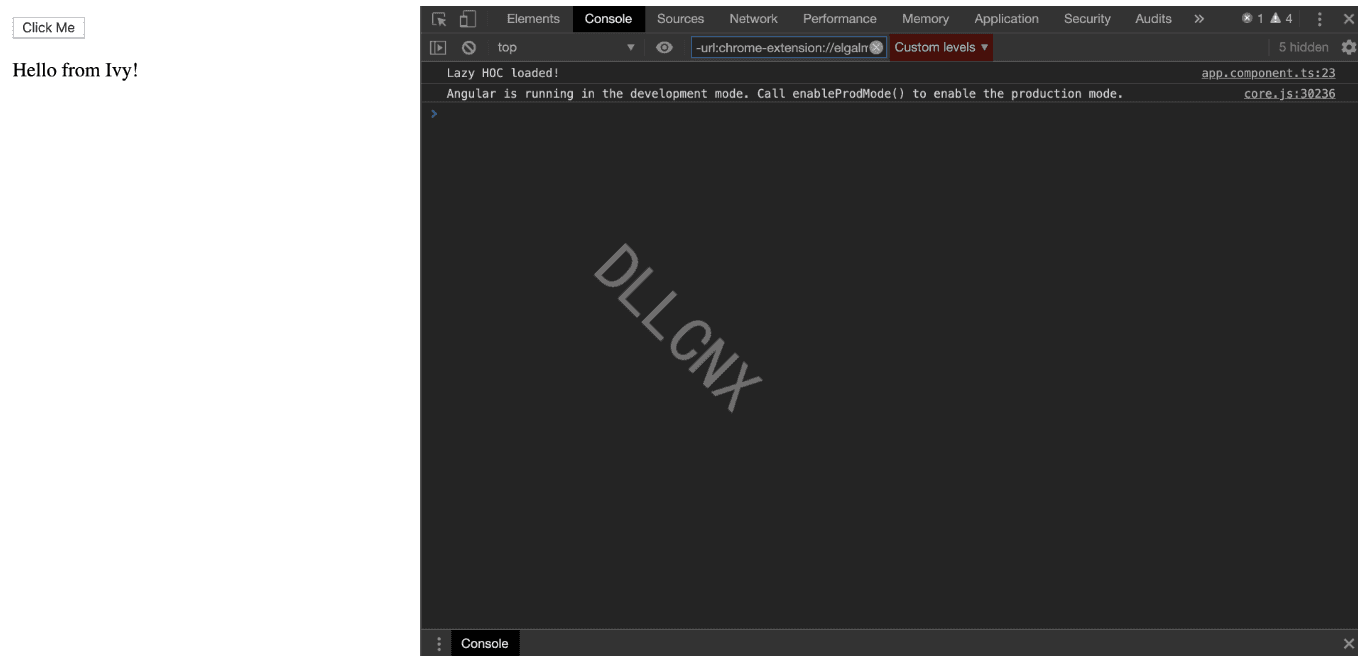
摘要
我们刚刚学到的内容的快速摘要:
- Ivy,第三代Angular编译器就在这里!它具有向后兼容性,通过使用它,我们可以获得更小的捆绑包,更容易调试API,更快的编译和动态加载模块和组件。
- Angular与Ivy的未来看起来很令人兴奋,有像HOC这样的酷炫和令人兴奋的功能。
- Ivy还为Angular Elements设置了基础,使其在我们的Angular应用程序中变得更加流行。
- 试试看!这就像设置
enableIvy标志一样简单true!
谢谢阅读!

